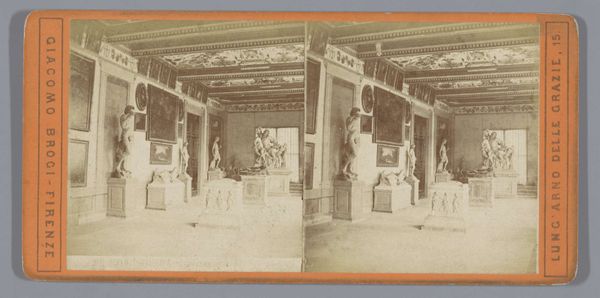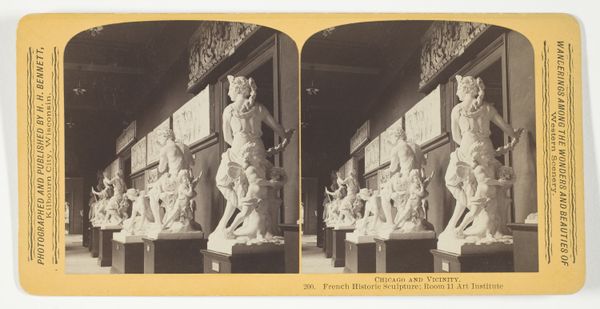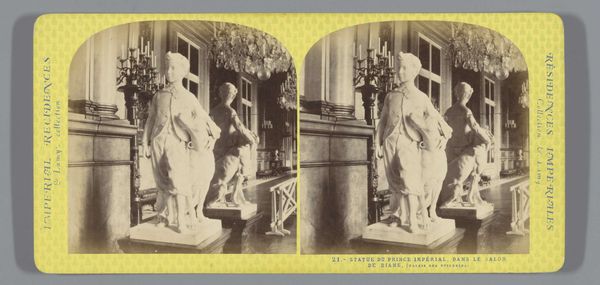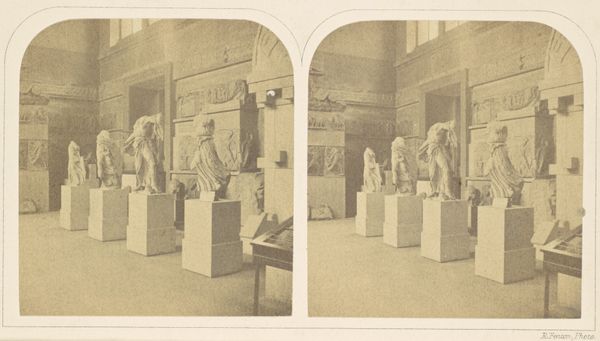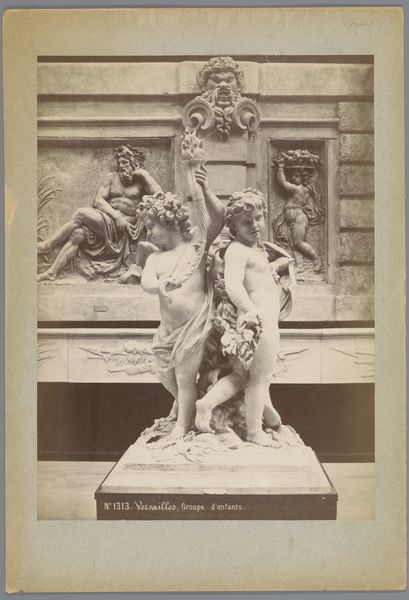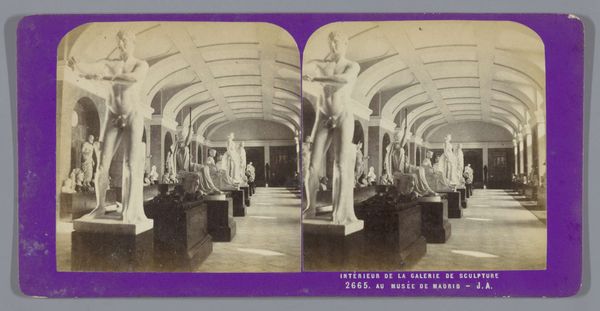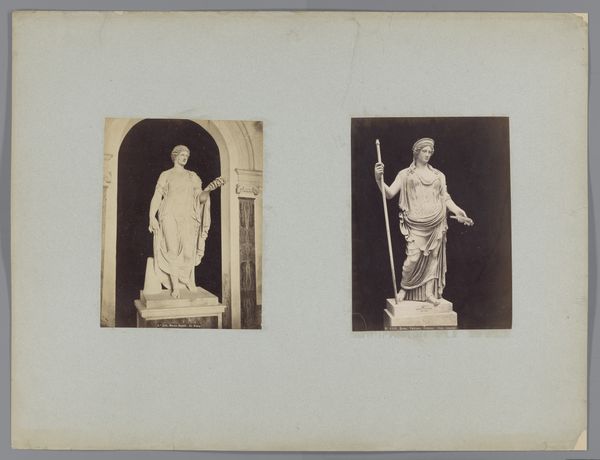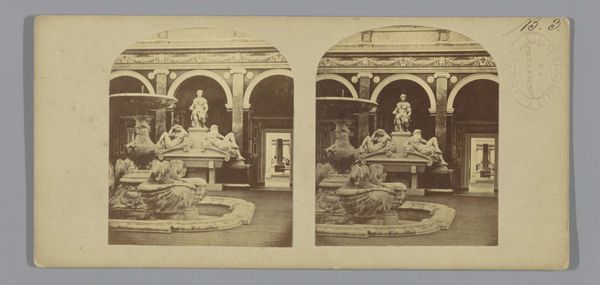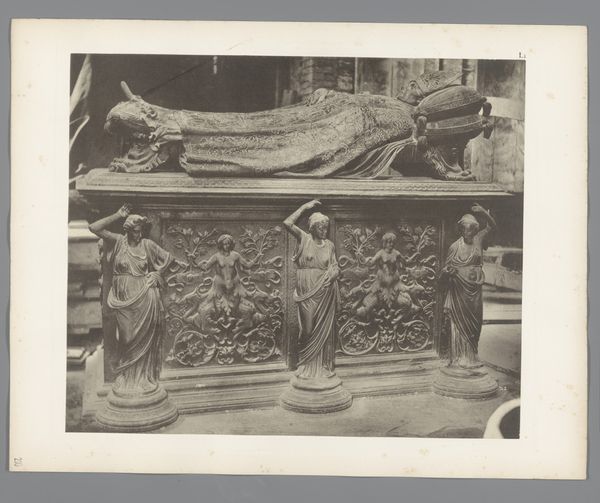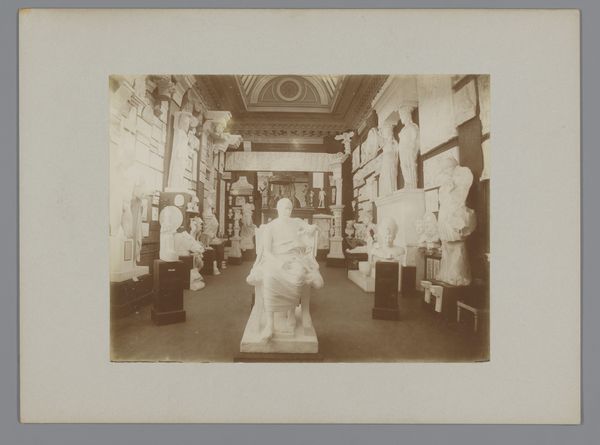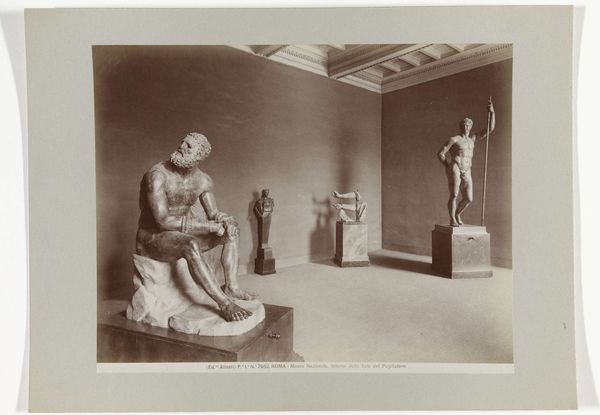
print, photography, sculpture
#
print print-like
#
photo restoration
#
neoclassicism
# print
#
photography
#
ancient-mediterranean
#
sculpture
#
genre-painting
Dimensions: height 83 mm, width 171 mm
Copyright: Rijks Museum: Open Domain
Curator: What a striking photograph. We're looking at "Sculpturen op de Italiaanse afdeling van de Wereldtentoonstelling van 1867" created by Lèon and Lèvy, back in 1867. It shows a collection of sculptures at that year's World's Fair in Paris. Editor: My first impression is how formal and staged the presentation of these sculptures is. There is such rigidity in this image of a time in which the World Fairs represented cultural authority and empire. Curator: Absolutely. These exhibitions were highly organized, with nations displaying their artistic, industrial, and technological achievements. This photograph serves as documentation of both the artworks and their context of display, revealing the values and aspirations of the time. Note, in particular, the high placement of some sculptures relative to others; it speaks volumes about class differences within art production, too, at a time in Europe that struggled for stability in the post-Napoleonic era. Editor: And this form of display inherently elevates the work shown, and establishes these classically influenced marble sculptures as a display of Italian artistic capability. But where are the markers of labor? Where is the dirt and mess that must have been an inextricable part of the production of art? These World Fairs and displays, in my view, erase so much social context, creating an aura of cultural supremacy divorced from production practices. Curator: You raise an important point. This photograph, while ostensibly showcasing artistic accomplishment, also acts as a filter, consciously curating how these works are perceived, sanitizing art’s creation to make it acceptable to bourgeois sensibilities. We only see the finished product, devoid of the fingerprints and marks of labor. This contributes to the mythology surrounding art, masking its often exploitative foundations. Editor: Thinking about how these displays function politically allows us to ask more important questions, like whose art is missing here? Curator: Exactly. By highlighting what’s present, we’re equally confronted by the absences. This image, ostensibly a record, prompts us to unpack the power dynamics and cultural biases embedded in historical documentation and exhibition practices. Editor: Ultimately, the World’s Fair in 1867 reinforced not just artistic canons but also national and social hierarchies. The image serves as a reminder of the social structures shaping the art world and beyond.
Comments
No comments
Be the first to comment and join the conversation on the ultimate creative platform.
